In October 2022 we conducted a survey to gain a better understanding of how people perceive their safety when attending large events and how they feel about current security practices. We’ve summarized our findings here.
Executive Summary:
Gun violence and other security incidents continued to make headlines in 2022, and while there is no one solution to stopping these mass casualty events, security technology addresses some of these problems – especially when it comes to keeping people safe at large events such as professional sports games and concerts held in arenas and stadiums. These events host tens of thousands of people at once, so the highest degree of security is mandatory for continued operation.
Xtract One’s survey found that security remains top of mind for spectators attending large events and that respondents said they wish they could change some aspects of the current security technology used at venues housing them.
Key Findings:
- Over 85% of respondents said they think about safety all the time or sometimes before attending a large event
- Almost half said a safety concern has stopped them from attending a live, in-person event
- Most respondents said they typically wait between five and 15 minutes to get through a security line when entering a venue
- Almost one-third of respondents said they have witnessed a fight or other security issue while waiting in line to enter a venue
- Respondents were clear: they said they most wished security lines were faster when asked about what they would change about venue security requirements
Part 1: Safety Remains Top of Mind
In this age of continued weapons violence and social unrest, people are understandably concerned about their safety when gathering at large events. The survey found nearly half of respondents (48%) said they think about their safety “all the time” before attending large events at large venues. Further, 38% said they “sometimes” think about their safety. This shows that current events and violence in the news remains top of mind for patrons.
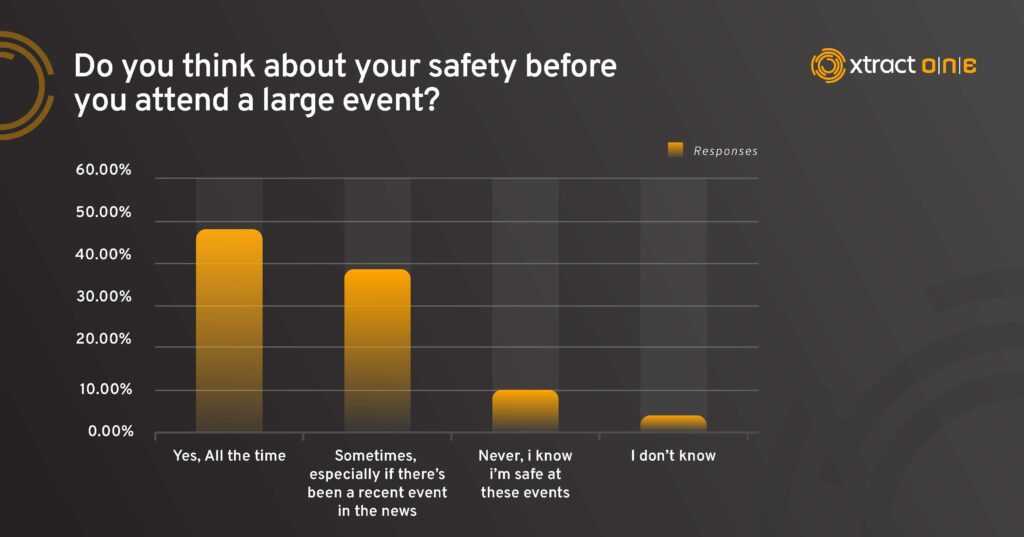
Additionally, 42% of survey respondents said a security concern has stopped them from attending a live, in-person event. This is an important consideration as venues try to recover ticket sales after the pandemic.
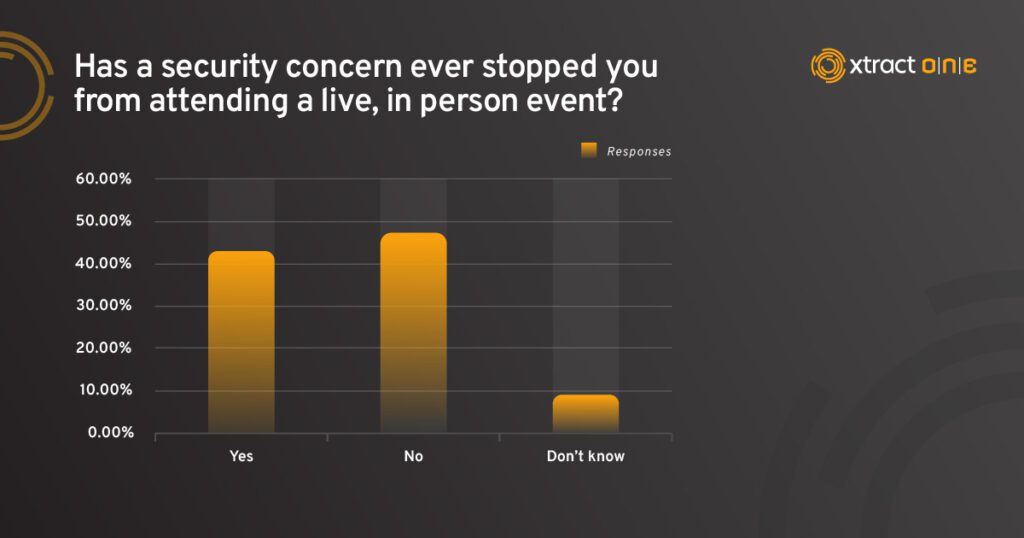
Lastly, respondents were also asked if they ever witnessed a fight or other security issue while waiting in line to enter a venue. Nearly one-in-three (32%) said yes – showcasing the need to quickly get patrons inside venues and out of security lines.
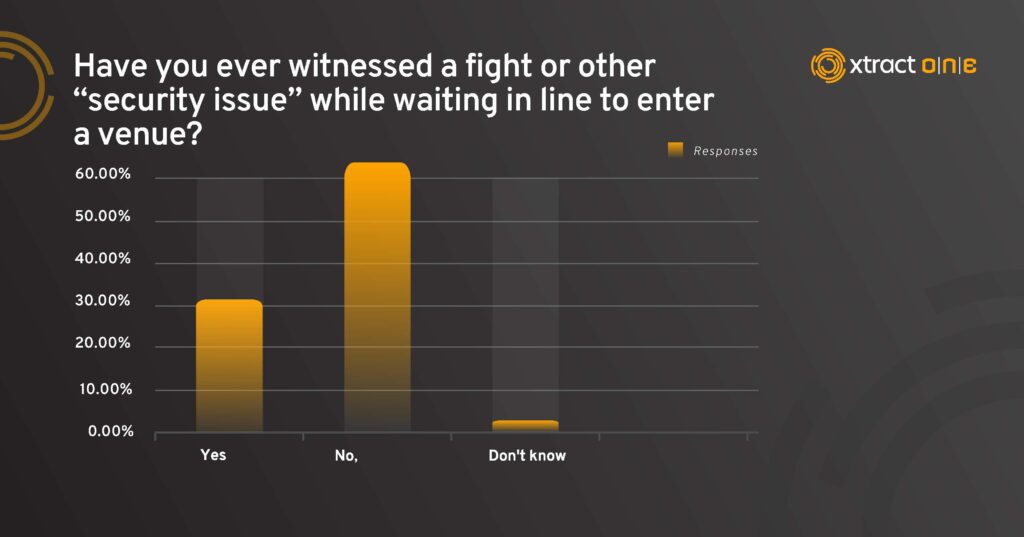
Part 2: Security Technology Could Use an Upgrade
The technology used in traditional walk-through metal detectors (WTMDs) is over 40 years old – it seems time that physical security technology got an upgrade to keep up with other innovations from the past few years – including artificial intelligence (AI.)
The survey asked respondents what kind of entry security systems were at venues they visited. A majority (56%) said WTMDs, which required attendees to stop and remove personal items, followed by handheld metal-detector wands (38%). Only one-third of respondents (33%) said they had been to venues using walk-through gateways not requiring emptying of pockets and other personal invasions.
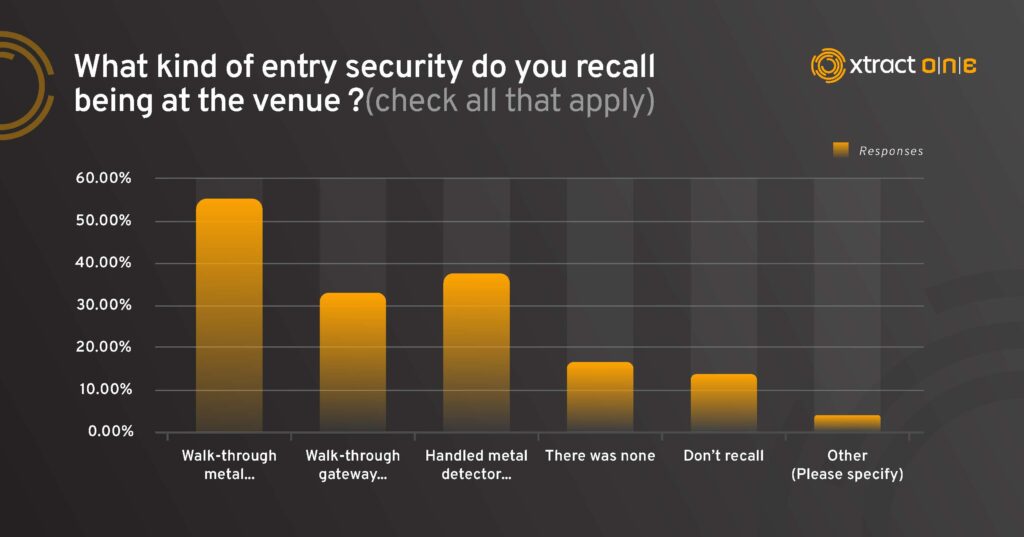
When it comes to waiting in line, experiences ranged from breezing right into the event to standing outside in the cold for what felt like hours. The survey found that most people waited between five and 15 minutes in a security line, while about 40% said they waited more than 15 minutes. In fact, half of respondents (50%) answered that being faster was the number one thing they would change about common security requirements at venues, while having integrated security and ticket scanning technology was the second choice.
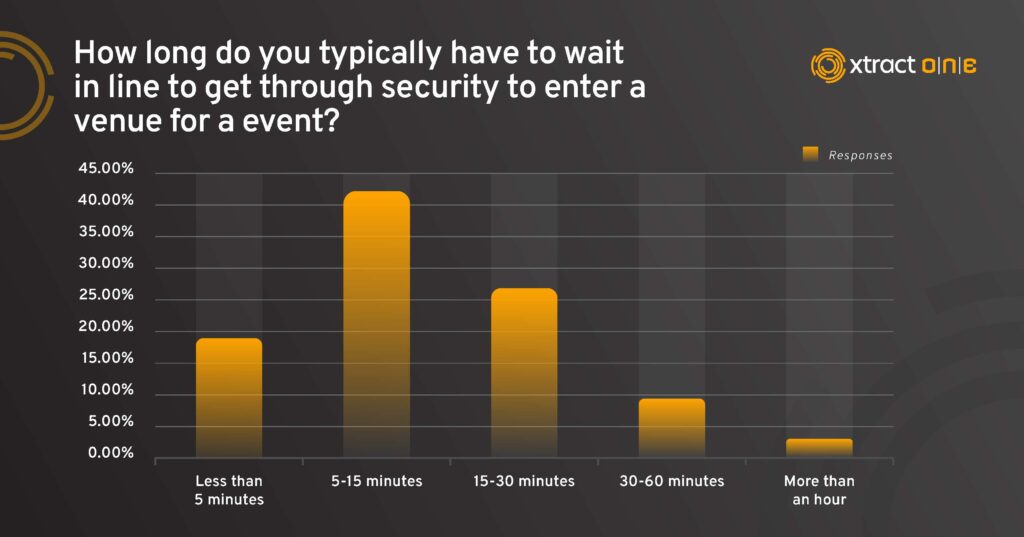
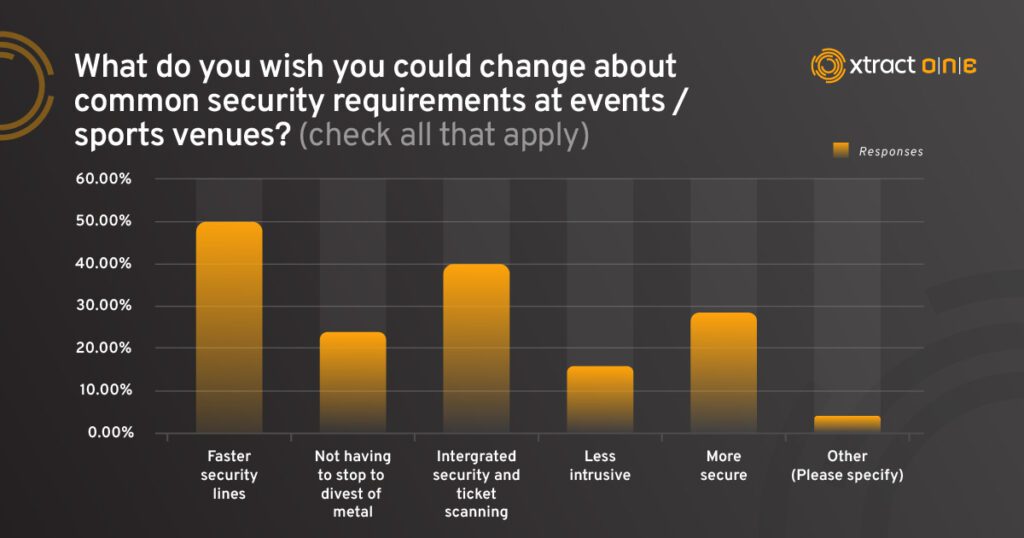
Methodology:
Xtract One’s survey of 304 respondents was conducted in October 2022 via Survey Monkey. A majority of the respondents (over 70%) said they had been to a large event in the last 12 months. Respondents ranged in age, gender and geographic location. The goal of the survey was to gain an understanding of how people think about their safety when attending large events, and how they feel about current security practices.
